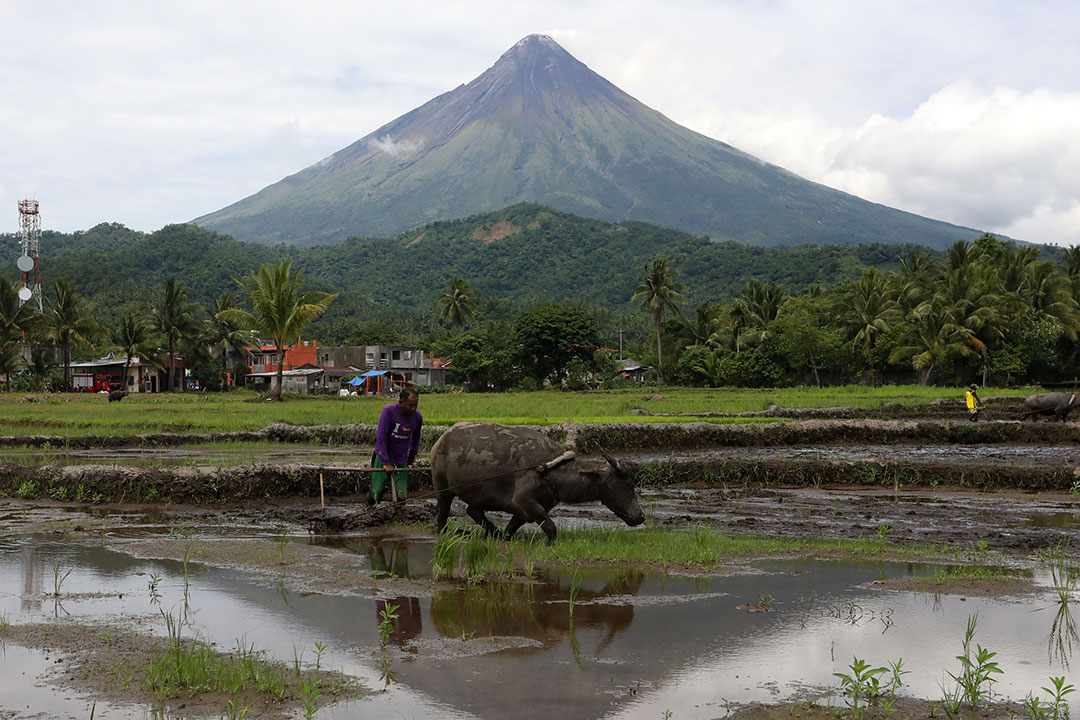Philippine Q1 farm output flat amid El Niño

By Adrian H. Halili, Reporter
PHILIPPINE AGRICULTURAL production growth was flat in the first quarter amid a prolonged dry spell induced by El Niño, according to the local statistics agency.
In a report on Wednesday, the Philippine Statistics Authority (PSA) said the value of farm output at constant 2018 prices rose by 0.05% to P428.99 billion from a year earlier. Expansion was 2.1% a year ago and 0.9% in the previous quarter.
The PSA attributed the growth to higher poultry production values.
 At current prices, the value of production in agriculture and fisheries rose by 6.7% year on year to P659.02 billion.
At current prices, the value of production in agriculture and fisheries rose by 6.7% year on year to P659.02 billion.
“The impact of reduced rainfall and hotter temperatures were evident in lower crops and fishery production in the first quarter,” Agriculture Secretary Francisco P. Tiu Laurel, Jr. said in a statement.
“If El Niño will persist through the second quarter, we’re cautiously optimistic that the interventions we have taken will allow the agriculture sector to mend and return better results between April and June,” he added.
The state weather bureau has said El Niño is weakening though its effects are expected to last until August.
“One major factor impacting crops is El Niño, including the delayed distribution of input subsidies,” former Agriculture Secretary William D. Dar said in a text message.
Crops, which accounted for 57.6% of total farm output, slid by 0.3%, a reversal of the 1.7% growth a year earlier and 0.3% advance in the fourth quarter.
Production of palay or unmilled rice contracted by 2%, reversing the 5.2% growth a year ago.
“When you have less water and you have El Niño… there’s also the prevalence of pests and diseases in crops, so that affected their productivity,” Danilo V. Fausto, president of the Philippine Chamber of Agriculture and Food, Inc., said by telephone.
Palay production declined to 4.69 million metric tons (MT) from 4.78 million MT a year earlier, the PSA said. Corn output growth slowed to 0.5% from 5.2% a year ago.
The Department of Agriculture estimates damage from El Niño at P5.9 billion, with rice and corn as the most affected crops. Losses for rice were valued at P3.4 billion, while corn losses reached P1.76 billion.
The value of other crops also increased including onion (28.6%), coffee (25.2%), sugarcane (17.2%), tobacco (9.5%), cabbage (8.2%), calamansi (6.3%), cacao (2.7%), mango (2.6%), pineapple (1.2%), rubber (1%) and tomato (0.5%).
On the other hand, declines were reported for sweet potato (9%), cassava (8.9), mongo (6.4%), banana (4.5%), ampalaya (4%), eggplant (3.6%), coconut (3.3%), abaca (1.5%) and potato (0.7%).
TRADE POLICY
Crop output decline should be blamed on the state’s import policies, not on El Niño alone, said Leonardo A. Lanzona, economics professor at the Ateneo de Manila University.
“A lot of attention is given to the agricultural sector as inflation is heavily caused by food inflation,” he said in a Facebook Messenger chat. “A significant proportion of the resources has been spent on getting imports, especially for rice, to reduce prices.”
Rice imports have reached 1.51 million metric tons as of April 25, according to the Bureau of Plant Industry.
“As a result, overall agricultural production has remained at a standstill because trade policy has offset domestic agricultural policy,” he added.
President Ferdinand R. Marcos, Jr. has ordered the Agriculture, Finance and Trade departments to ease requirements for farm imports.
PSA data showed poultry production grew by 5.9% during the period, compared with a year earlier and 7.8% in the fourth quarter.
The poultry sector was the sole gainer last quarter, accounting for 16% of the total farm output.
“Although you have poultry imports, the local industry is resisting these,” Mr. Fausto said. “People still prefer fresh over imported frozen food.”
Most subsectors under poultry posted growth last quarter except for duck eggs, which declined by 4.3%. Chicken (7.7%), chicken eggs (2.4%) and duck (1.6%) all gained.
“The poultry industry was better prepared for El Niño,” Roy S. Kempis, director of the Center for Business Innovation in Angeles University, said in a Viber message. “The investment and actual poultry operations using climate-controlled poultry housing systems prevented chicken mortalities.”
Livestock output, which accounted for 13.9% of the total farm output, fell by 3.6% during the period, reversing the 4.1% gain a year earlier and 2.7% growth in the previous quarter.
PSA data showed an increase in the value of production for dairy (3.7%), carabao (1%) and cattle (0.3%), while hog and goat declined by 4.3% and 4.1%.
The PSA said fishery production declined by 1.3% in the first quarter, reversing the 0.5% growth a year earlier. Fisheries accounted for 12.5% of the total farm output.
“The decline in fishery production was not because of El Niño,” Mr. Kempis said. “This could be attributed to the fishing ban that was still in effect in January and February for some fish species like sardines and mackerel including round scad.”
Agriculture contributes about a tenth to the country’s economic output.



